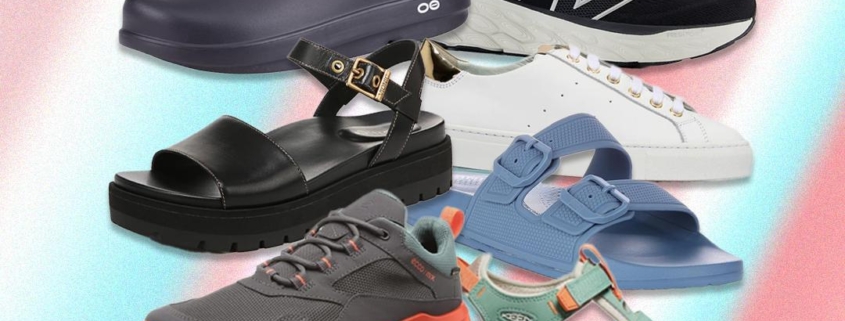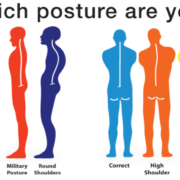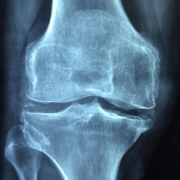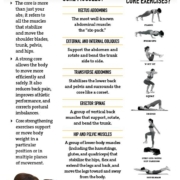7 Essential Tips for Choosing Joint-Supportive Footwear
When it comes to keeping our joints happy and healthy, the foundation we stand on—our footwear—plays a crucial role. Choosing the right shoes can mean the difference between comfort and discomfort, especially for those with joint concerns. In this listicle, we’ll explore 7 essential tips for choosing joint-supportive footwear that will guide you in selecting the perfect pair to enhance mobility and reduce strain. From understanding the importance of arch support to recognizing the benefits of cushioning, you’ll gain valuable insights that empower you to make informed decisions. Whether you’re an avid walker, a fitness enthusiast, or simply someone looking to ease daily discomfort, these tips will help you step confidently into a world of supportive and stylish footwear. Let’s dive in!
1) Understand Your Foot Type: Before diving into the world of footwear, it’s crucial to know your foot type—whether you have flat feet, high arches, or neutral arches. This knowledge will guide you toward shoes that offer the right support and alignment for your unique structure
Understanding your foot type is the first step toward finding the perfect pair of shoes that will keep your joints happy and healthy. There are three primary foot types: flat feet, high arches, and neutral arches. Each type has its own unique characteristics that affect how weight is distributed across the foot. For instance, flat feet often result in overpronation, where the foot rolls inward excessively, while high arches may lead to underpronation, causing the foot to roll outward. Knowing your foot type allows you to select footwear that provides the appropriate cushioning and support, minimizing the risk of injury and discomfort.
To determine your foot type, consider the following methods:
- Wet Foot Test: Wet your foot and step onto a piece of paper. The imprint left behind will reveal your arch type.
- Professional Assessment: Visit a podiatrist or a specialized running store for a gait analysis.
- Visual Inspection: Look at the shape of your foot when standing; a flat foot will appear wider, while a high arch will show a pronounced curve.
Once you identify your foot type, you can refer to the table below to help guide your shoe selection:
| Foot Type | Recommended Features |
|---|---|
| Flat Feet | Arch support, stability features, cushioning |
| High Arches | Cushioning, flexibility, minimal support |
| Neutral Arches | Balanced cushioning, moderate support |
2) Look for Proper Arch Support: Shoes with adequate arch support help distribute weight evenly across your foot, reducing strain on your joints. Consider insoles or orthotics if you need extra support, ensuring that your footwear works in harmony with your body
When selecting shoes, one of the most crucial features to consider is arch support. Proper arch support helps to evenly distribute your body weight across your feet, which can significantly reduce strain on your joints, especially during prolonged periods of standing or walking. Look for shoes that offer built-in arch support tailored to your foot type—whether you have flat feet, high arches, or a neutral arch. A well-structured shoe can make a world of difference in your comfort levels, helping to prevent fatigue and discomfort throughout your day.
If you find that standard arch support doesn’t quite meet your needs, consider investing in custom insoles or orthotics. These can be designed specifically for your foot shape and provide additional support where it’s needed most. When choosing footwear, ensure that it accommodates any insoles you might use, allowing for a snug fit without compromising comfort. Remember, the goal is to create a harmonious relationship between your footwear and your body, enabling you to move freely and without pain.
3) Prioritize Cushioning: Joint-friendly footwear often features ample cushioning to absorb shock and reduce impact on your knees and hips. Look for shoes with high-quality materials that provide comfort without compromising support
When selecting footwear that protects your joints, the level of cushioning is a critical factor to consider. Shoes with ample cushioning are designed to absorb shock, which helps to minimize the impact on your knees and hips during daily activities. Look for options that feature high-quality materials such as EVA foam or gel inserts, which are known for their exceptional shock-absorbing properties. This cushioning not only enhances comfort but also contributes to overall foot health, allowing you to stay active without discomfort.
Additionally, pay attention to the design and construction of the shoe. A well-cushioned shoe should have a supportive midsole that cradles your foot, providing stability while still allowing for natural movement. Consider the following features when evaluating cushioning:
| Feature | Description |
|---|---|
| Midsole Material | Look for lightweight materials that offer both cushioning and support. |
| Insole Thickness | Thicker insoles often provide more cushioning and comfort. |
| Heel Drop | A higher heel drop can enhance shock absorption for heel strikers. |
By focusing on these cushioning elements, you can ensure that the footwear you choose will not only feel good but also support your joints effectively. Prioritizing cushioning in your shoe selection can lead to a more comfortable and active lifestyle, allowing you to enjoy your favorite activities without the worry of joint pain.
4) Choose the Right Fit: A proper fit is essential for joint health. Shoes should be snug but not tight, allowing for a bit of wiggle room in the toes. Remember to try on shoes later in the day when your feet are slightly swollen to get the best fit
Finding the perfect pair of shoes is not just about style; it’s a crucial step towards maintaining your joint health. When trying on shoes, aim for a snug fit that provides support without constriction. The ideal shoe should allow for a little wiggle room in your toes, ensuring that they aren’t cramped. To achieve this, consider the following key points:
- Measure Your Feet: Your foot size can change over time, so always measure both feet before shopping.
- Consider Width: Feet come in various widths, and a wider shoe may be necessary for comfort.
- Test for Space: Ensure you can slide your index finger behind your heel when standing; this indicates proper length.
- Try Them On Later: Shoes should be tried on later in the day when your feet are slightly swollen to get a true fit.
To help visualize the right fit, consider the following table that summarizes the essential elements of a well-fitted shoe:
| Fit Element | Ideal Condition |
|---|---|
| Length | 1/2 inch space at the toe |
| Width | Comfortably snug, no pinching |
| Arch Support | Matches your foot type |
| Heel Fit | Secure but not tight |
By adhering to these guidelines, you can ensure that your footwear not only looks good but also supports your joints effectively. A well-fitted shoe can make all the difference in your overall comfort and mobility, allowing you to stay active and pain-free.
5) Consider the Shoes Flexibility: While support is vital, flexibility also plays a key role in joint health. Opt for shoes that allow for natural foot movement, helping to prevent stiffness and promoting a more comfortable stride
When selecting footwear, it’s crucial to strike the right balance between support and flexibility. Shoes that are overly rigid can restrict natural foot movement, leading to discomfort and potential joint issues. Look for options that feature materials such as breathable mesh or soft leather, which can adapt to the contours of your feet. A well-designed shoe should allow your toes to splay comfortably while providing adequate arch support. This combination helps in maintaining proper alignment and reducing the risk of stiffness during extended wear.
To further assist in your search for the perfect pair, consider shoes with a flexible sole. A sole that bends easily at the forefoot can enhance your natural gait, allowing for a smoother stride. Here are some features to look for:
- Flex Grooves: These are specific cuts in the sole that promote bending and flexibility.
- Lightweight Materials: Shoes made from lighter materials often provide better movement and comfort.
- Minimalist Design: A design that minimizes bulk can allow for more natural foot motion.
To help visualize the differences, consider the following table that compares flexible and rigid shoe features:
| Feature | Flexible Shoes | Rigid Shoes |
|---|---|---|
| Natural Movement | ✔️ | ❌ |
| Joint Comfort | ✔️ | ❌ |
| Weight | Lightweight | Heavy |
| Breathability | High | Low |
6) Pay Attention to the Heel Height: A moderate heel height can help maintain proper alignment and reduce pressure on your joints. Avoid excessively high heels or completely flat shoes, as both can lead to discomfort and joint strain
When selecting footwear, the height of the heel plays a crucial role in your overall comfort and joint health. A moderate heel height, generally around 1 to 2 inches, can promote better posture and alignment, allowing your body to distribute weight evenly. This balance reduces the strain on your joints, particularly in the knees and hips, making it easier to stay on your feet for longer periods without discomfort. In contrast, excessively high heels can throw off your natural alignment, while completely flat shoes can lack the necessary support to absorb shock effectively.
To find the perfect heel height for your needs, consider the following factors:
- Activity Level: Choose footwear that matches your daily activities, whether it’s walking, standing, or exercising.
- Foot Shape: Different heel heights may suit various foot shapes; ensure the shoe accommodates your unique structure.
- Arch Support: Look for shoes that provide adequate arch support, especially if you have flat or high arches.
For a quick reference, here’s a simple comparison of heel heights:
| Heel Height | Comfort Level | Best For |
|---|---|---|
| Flat (<1 inch) | Low | Casual wear, short walks |
| Moderate (1-2 inches) | High | Daily wear, work, events |
| High (2+ inches) | Variable | Special occasions, limited use |
7) Test Them Out: Before making a purchase, take the shoes for a test walk. Pay attention to how they feel on your feet and whether they provide the support and comfort you need. A little trial can go a long way in ensuring you make the right choice for your joints
Trying on shoes before making a purchase is a crucial step that shouldn’t be overlooked. When you step into a pair of shoes, take a moment to really feel how they hug your feet. Are they snug without being tight? Notice if there’s ample room for your toes to move freely. Pay attention to the arch support and cushioning, as these elements are vital for maintaining joint health. Take a few laps around the store—a short test walk can reveal a lot about the shoe’s comfort level. Is there any pinching or rubbing? Does the sole feel supportive? These small details can make a significant difference in your overall comfort and well-being.
In addition to your initial impressions, consider the surface you’re walking on during your test. Walk on various surfaces—smooth floors, carpets, or even slightly uneven ground if possible. This will help you assess how well the shoes adapt to different terrains. If you have access to a treadmill, give it a whirl! Take note of how your joints feel during and after your trial. Keeping a checklist can be helpful; jot down your thoughts on the following aspects:
| Feature | Notes |
|---|---|
| Fit | Snug but not tight |
| Arch Support | Comfortable and supportive |
| Cushioning | Soft but responsive |
| Flexibility | Allows natural foot movement |
| Traction | Grips well on various surfaces |
The Conclusion
As we wrap up our journey through the essential tips for selecting joint-supportive footwear, remember that the right pair of shoes can be a game-changer for your overall well-being. Whether you’re navigating a busy workday, enjoying a leisurely stroll, or hitting the gym, your feet deserve the best support possible. By prioritizing comfort, fit, and the right materials, you can help protect your joints and enhance your mobility.
So, take these tips to heart as you shop, and don’t hesitate to invest the time in finding footwear that truly meets your needs. After all, every step you take is a step toward a healthier, more active lifestyle. Happy shoe hunting, and may your feet carry you comfortably into every new adventure!










Leave a Reply
Want to join the discussion?Feel free to contribute!